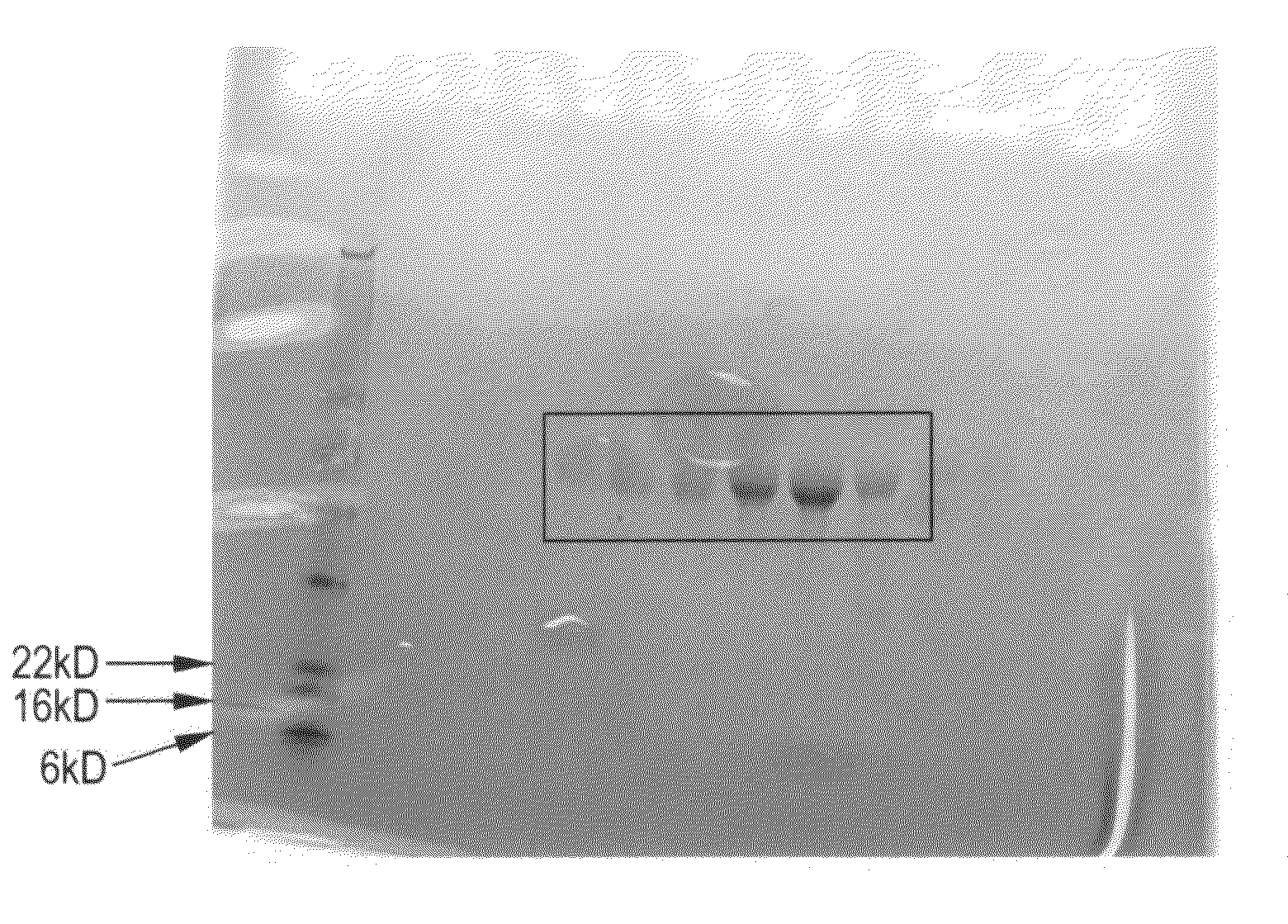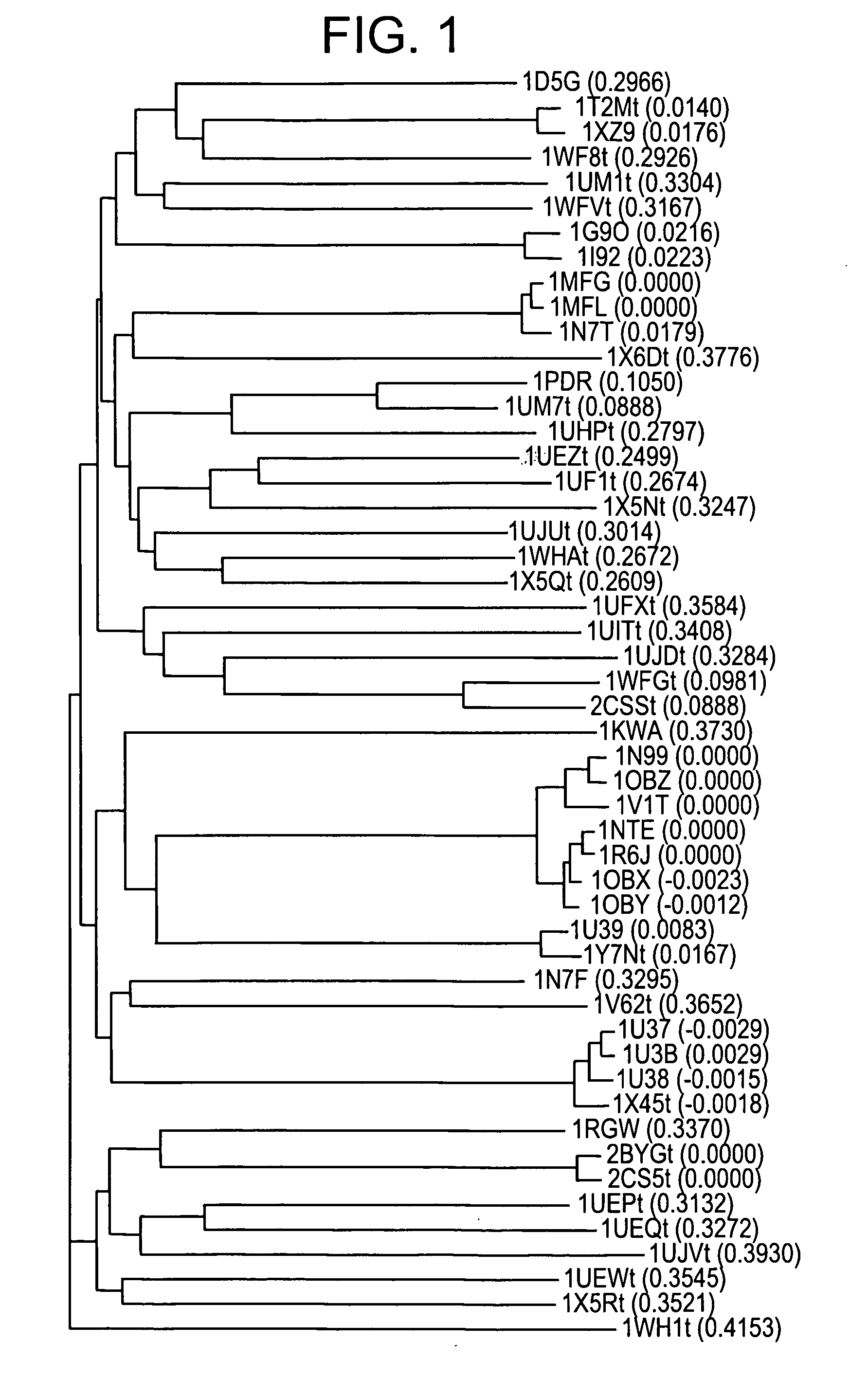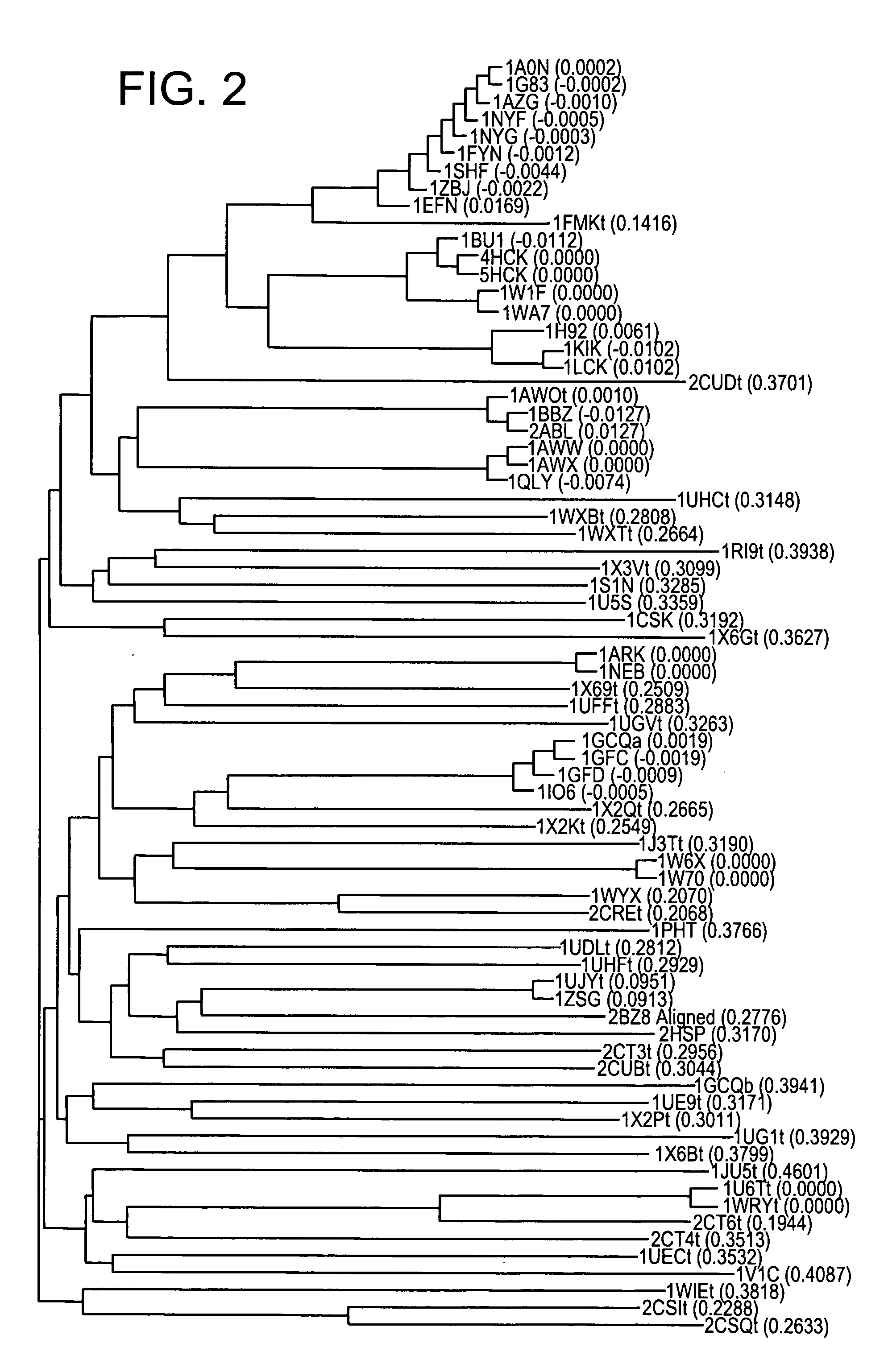Compositions and methods for producing bioactive fusion proteins
a technology of fusion proteins and bioactive components, applied in the field of biochemical arts, can solve the problems of high immunogenic risk, difficult recombinant expression, and special challenges in peptide production and delivery, and achieve the effect of low immunogenic risk
- Summary
- Abstract
- Description
- Claims
- Application Information
AI Technical Summary
Benefits of technology
Problems solved by technology
Method used
Image
Examples
example 1
Expression and Bioactivity of Fusion Proteins
[0277]Human protein domains were selected for small size, in order to aid in high level expression in prokaryotic hosts, and also to provide an advantage to the mass ratio of active peptide to inactive carrier. The small size of the fusion protein is expected to result in a short serum half-life for the native molecule, which may allow for modulation of the pharmacokinetic profile of the molecule to fit the therapeutic need by attaching PEG moieties or other half-life extending moieties of various masses and configurations.
[0278]Selection of small pharmacologically inactive protein domains. Small protein domains from the following families were selected for further investigation: the CH2 domain of IgG1, the 10th fibronectin III domain, the villin headpiece domain, several SH3 domains, several PDZ domains, and several SH2 domains. The CH2 domain was chosen to represent the immunoglobulin fold superfamily, since it is the only domain in the...
example 2
PEGylation of Fusion Proteins
[0294]Six different OSK1 fusion proteins (SEQ ID NOS:80-85) were PEGylated with 20 kDa methoxy-PEG-aldehyde by reductive alkylation of their reactive amino groups similar to methods previously described in Kinstler et al., N-terminally chemically modified protein compositions and methods, U.S. Pat. No. 5,824,784. Briefly, the purified fusion proteins were diluted to 2 mg / ml in 50 mM NaOAc, pH 5.0 to which 20 kDa methoxy-PEG-propionaldehyde (Nektar, Huntsville, Ala.) was added in a 2-fold molar excess, followed by a sufficient volume of 1 M sodium cyanoborohydride to result in a final concentration of 10 mM. The reaction was sealed and mixed gently overnight at 4° C. Upon completion of the reaction period, the reactions were quenched by 4-fold dilution with 20 mM NaOAc, pH 4.0.
[0295]The mono-substituted PEG conjugates were purified from the poly-substituted conjugates and un-reacted fusion proteins by preparative FPLC (Akta, GE Healthcare, Piscataway, N.J...
example 3
Villin Headpiece Protein Fusions and PEGylation
[0300]In another embodiment of the present invention a small protein domain was selected that is an autonomously folding protein fragment from villin, which has an unusually thermostable structure and contains no cysteine. Several internal sites suitable for mutation to cysteine have been identified that allow PEGylation while not interfering with peptide fusions at either the N- or C-terminus of the small pharmacologically inactive protein domain. Provided herein is an example that the villin headpiece fusion platform permits recombinant expression of small, therapeutic peptides while allowing, optionally, facile PEGylation for enhanced pharmacokinetic properties.
[0301]Villin is a large (92.5 kDa) actin-binding protein involved in the maintenance and organization of actin filaments and implicated in the formation of microvilli in absorptive tissues. The protein is broadly expressed in a variety of tissues and the human sequence has bee...
PUM
| Property | Measurement | Unit |
|---|---|---|
| Length | aaaaa | aaaaa |
| Fraction | aaaaa | aaaaa |
| Atomic weight | aaaaa | aaaaa |
Abstract
Description
Claims
Application Information
 Login to View More
Login to View More - R&D
- Intellectual Property
- Life Sciences
- Materials
- Tech Scout
- Unparalleled Data Quality
- Higher Quality Content
- 60% Fewer Hallucinations
Browse by: Latest US Patents, China's latest patents, Technical Efficacy Thesaurus, Application Domain, Technology Topic, Popular Technical Reports.
© 2025 PatSnap. All rights reserved.Legal|Privacy policy|Modern Slavery Act Transparency Statement|Sitemap|About US| Contact US: help@patsnap.com



